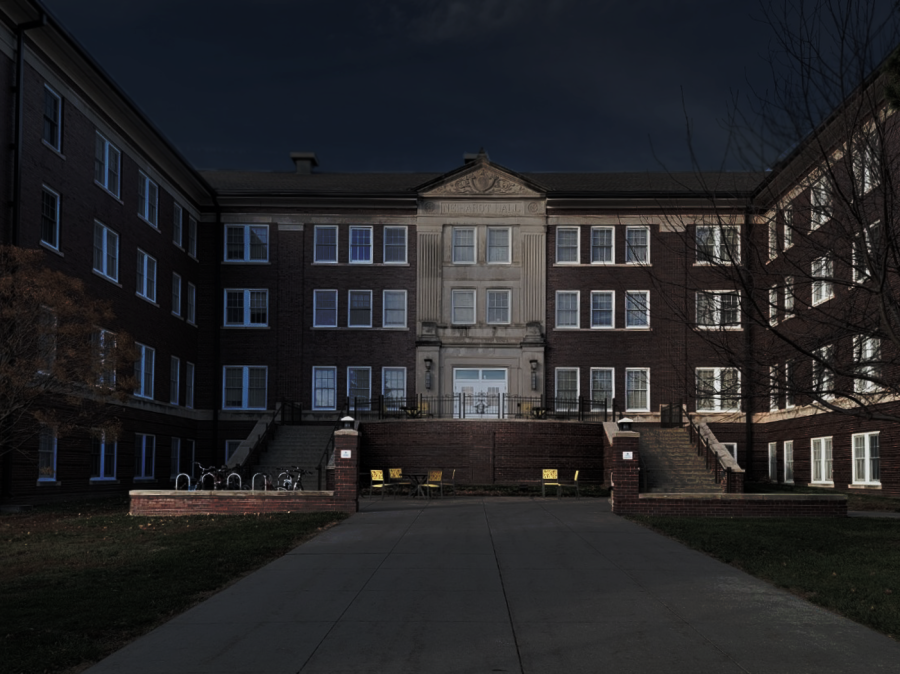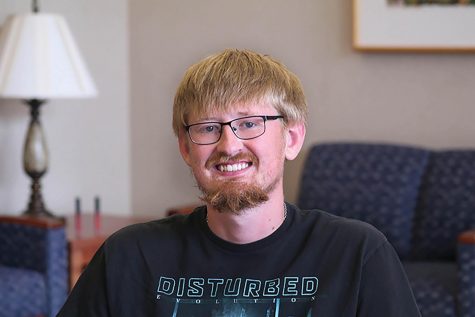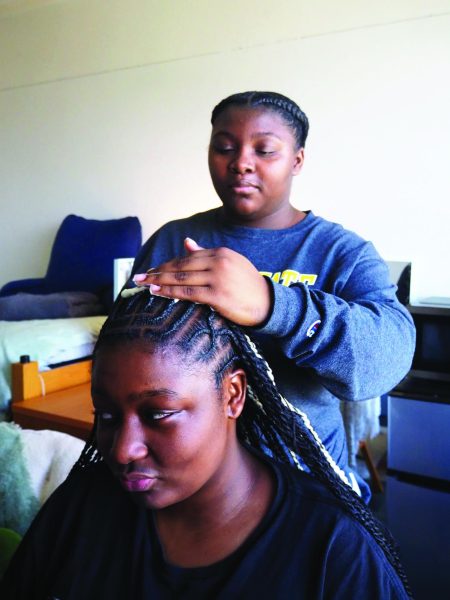The Legend of Cora: A Ghost at WSC
The ghost of Neihardt Hall is a campus legend. Almost every student has heard about her, yet very few know anything beyond that basic story. Photo courtesy of WSC Media Relations.
November 17, 2021
The ghost of Neihardt Hall is a campus legend. According to the legend, Cora was a young student who hung herself in the basement of Neihardt Hall and now haunts the building she died in. She has been known to flicker lights, mess with students’ doors, and make strange noises in the middle of the night. Almost every student has heard about her, yet very few know anything beyond that basic story.
Josh Jenkins, a history major and first year transfer student, said he heard about the ghost of Cora within the first few weeks of being at WSC.
“I don’t remember exactly when I heard the story. It was probably around the time of freshman initiation.” Jenkins said.
He said he had a vague idea of what the ghost of Neihardt story was and gave the same basic story.
The truth is there is no real evidence that the story as it is told today is true. It does bring up the question of where the story came from.
Marcus Schlichter, the College Archivist and Acquisitions Librarian, has done extensive research into this topic. He believes that the ghost of Cora may actually be a combination of several different stories that slowly got formed into one. None of this is a provable fact, but it is backed up by evidence.
The Name Cora
Cora Hintz was a rural school teacher who grew up on a farm near Coleridge, Nebraska. She graduated from Nebraska State Teacher’s College in 1917, which would eventually become Wayne State College in 1963.
She was teaching at a small school near her hometown when Frank Faust, a would-be suitor, asked her to join him outside. He got down on one knee and proposed marriage. She politely rejected him and started to go back inside.
Frank promptly put a gun to the back of her head and pulled the trigger. He shot her two or three more times in the back before fleeing. He later shot himself. At the time of Cora’s murder, her sister Laura Hintz was going to college in Wayne.
According to Schlichter, Cora Hintz was the closest fit to the legend as it is now. It happened in about the right area, in the right time period, and she had a traumatic death, the kind that is typical of ghost hauntings. It is highly likely that Laura talked about her sister and her tragic death while she was a student. If so, that could be the way that the name Cora got associated with the college.
Even though Cora does not have a direct link to Neihardt Hall, there is another story that that does and it may play a part in how the ghostly legend of Cora came to be.
A Link to Neihardt Hall
Nancyann Alford enrolled at Wayne in 1933. Prior to her enrollment, she lived in Arizona where she attended Arizona State for a year. During that time, she and three friends went on a hiking trip where they were caught in a blizzard. One of her friends died and she suffered severe frostbite.
William Brown was one of the survivors and the two married in secret. She moved to Wayne and left her secret husband back in Arizona. It was in her first year that she got involved with a student named Ronald Young.
The two became friends and were presumedly lovers, although that is not known for sure. In April, they were seen burglarizing two stores in town and Nancy was later found with stolen goods in her dorm room.
Shortly after that, Nancyann and Ronald broke into a dentist’s office. It was there she, with Ron’s help, committed suicide by slitting her wrists. He did the same but was found before he died. He was sent to prison for the crime of “cutting with intent to wound” for 19 months.
The story spread across the entire continent, with stories about the suicide appearing in The San Francisco Examiner, Boston Globe, and even newspapers in Canada.
Schlichter believes that this may be how the story of a suicide in Neihardt came about, although, once again, it is all speculative.
A massive, viral story like Nancy’s could have easily evolved and had things added to it in the process of many retellings. It could have been that the details were blurred and all that remained of the original story was that there was a girl who committed suicide and that she lived in Neihardt, which could have become a girl committed suicide in Neihardt.
The murder of Cora and the suicide of Nancyann happened about two decades apart, so it seems unlikely that the stories would have been conflated early on.
Schlichter could not find any evidence that the ghost of Cora story existed prior to the mid-60s. That was the earliest he could find of anyone talking about ghost stories on campus. Dr. Hellen Russel came to teach theater at Wayne in 1958 and she had an interesting impact on the college.
A Possible Origin
Dr. Russel loved ghost stories. She was the person students would go to hear tales of the afterlife from. She is quoted in an article published by the Lincoln Journal in 1983 saying, “theatre lore dictates that every old theatre must have its ghost.”
She had no problem talking about the ghosts haunting the campus. It could be that the traumatic stories of Cora and Nancy’s deaths were brought up at some point and a story was crafted from them, combining parts and removing or changing certain details. It is also possible that over the years the stories had already blended together. Without the ability to ask her, it may never be known for sure.
Since then, the legends involving the ghosts of Wayne State College have only been cemented into the campus’s culture. An article in the Wayne Stater from 1991 says students on the second floor of Neihardt had made contact with a spirit that called itself Cora.
The story claimed that in the early 1900s, Cora discovered she was pregnant and was scared to tell her parents, so she hung herself in the basement of Neihardt. A major problem with the story, Schlichter pointed out, was that Neihardt hadn’t been built in the early 1900s. It was finished in 1930, and there are no records of anyone named Cora hanging herself there at any point in its history.
Unfortunately for the diehard paranormal believers, it is unlikely that there was a girl named Cora that actually committed suicide in the basement of Neihardt Hall. There just isn’t any evidence to back that up. But that does not discredit any experiences that students have had there. It leads one to ask the question of who, or what may really be haunting the halls of Neihardt?











